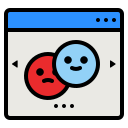Top Low-Code/No-Code Tools for Beginners: Start Building Without Code

What “No-Code” and “Low-Code” Really Mean
No-code tools let you build using visual blocks and templates, while low-code adds optional snippets and logic for flexibility. Together, they turn ideas into websites, apps, and automations through drag-and-drop components, prebuilt integrations, and guided workflows that help beginners learn by doing, not by memorizing syntax.

Why Beginners Love These Tools
Beginners appreciate instant feedback, visual clarity, and quick wins. With templates, onboarding checklists, and guided wizards, top low-code/no-code tools for beginners reduce friction. You can test a concept in an evening, gather feedback, and iterate rapidly, building momentum while developing real product intuition and confidence.

An Anecdote: A Weekend That Changed Maya’s Workflow
Maya, a school counselor, automated appointment booking over a single weekend using an intuitive no-code platform. What took her hours weekly became a painless flow, freeing time for students. She shared her success in the comments, inspiring others to try one small automation and report back results.
Core Categories of Beginner-Friendly Tools
Visual website builders help beginners launch polished pages using themes, responsive grids, and block-based editors. You can add forms, galleries, and basic SEO without touching code. Start with a simple landing page for your idea and invite readers to comment with a link for friendly feedback.
Core Categories of Beginner-Friendly Tools
Automation platforms connect everyday apps—email, spreadsheets, calendars—using triggers and actions. Beginners chain steps like, “when a form submits, add a row and send a welcome email.” This saves hours weekly. Share one repetitive task you want to eliminate, and we’ll suggest beginner-friendly starter recipes.


How to Choose the Right Tool, Step by Step
Write one sentence about your desired outcome, audience, and timeline. Define data you’ll capture, how often it changes, and who needs access. This clarity filters your options quickly and ensures the tool you pick genuinely supports your first milestone without overwhelming configuration or distracting features.




It’s tempting to add dashboards, tags, and complex logic. Resist it. Prove the core value first. If ten people complete your simple flow and request more, you have real signal. Share your validation threshold in the comments, and we’ll keep you accountable to ship sooner.

Plan your fields, keep names human-readable, and avoid duplicating meaning across columns. Consistency simplifies automations later. Add short descriptions to datasets so future-you understands each field. If you want help designing a clean schema, drop your top five fields and we’ll suggest improvements.

Keep a changelog: what you changed, why, and the result. Take periodic snapshots or duplicates before major edits. Document your core flows in a single page. Future you will thank you, and collaborators can contribute confidently. Share your template or ask for ours to copy freely.
A 30-Day Micro-Project Challenge
Commit to twenty minutes daily. Alternate between website tweaks, simple automations, and tiny app features. Track your streak visibly inside your tool. Post your day-one goal below, invite an accountability partner, and we’ll check in weekly to celebrate milestones and remove stubborn blockers together.
Curate Your Resource Stack
Pick two newsletters, one video channel, and one community forum. Limit inputs to avoid overwhelm. Each week, implement exactly one tactic you learned. Share your favorite resources here; we’ll compile a beginner-friendly list and send highlights if you subscribe for ongoing practical, clutter-free guidance.
Find a Buddy or Mentor
Pairing accelerates learning. A buddy helps review flows, name fields clearly, and prevent overbuilding. Offer to swap thirty-minute sessions. Post your time zone and interests below to connect. You’ll build faster, stay motivated, and turn small wins into sustainable momentum and genuine creative confidence.
From Beginner to Confident Builder: Next Steps

Expand with APIs and Advanced Features
Once comfortable, try adding a simple API call, conditional logic, or role-based permissions. Keep scope tiny and document every step. Share what you attempted and where you got stuck, and we’ll point to beginner-safe patterns that extend power without sacrificing clarity or your hard-won momentum.

Design Thinking for Non-Coders
Interview users, map pain points, and prototype fast. Prioritize clarity, not cleverness. Label buttons with verbs, reduce choices, and guide attention. Ask one question per step. Post screenshots for critique; together, we’ll refine copy and layout so your app feels welcoming, helpful, and joyfully simple.

Share, Teach, and Join the Conversation
Teaching cements understanding. Write a short post describing your problem, chosen tool, and outcome. Include one lesson and one surprise. Share it in the comments and subscribe for community spotlights. Your story will help the next beginner take their first step with courage and practical direction.
